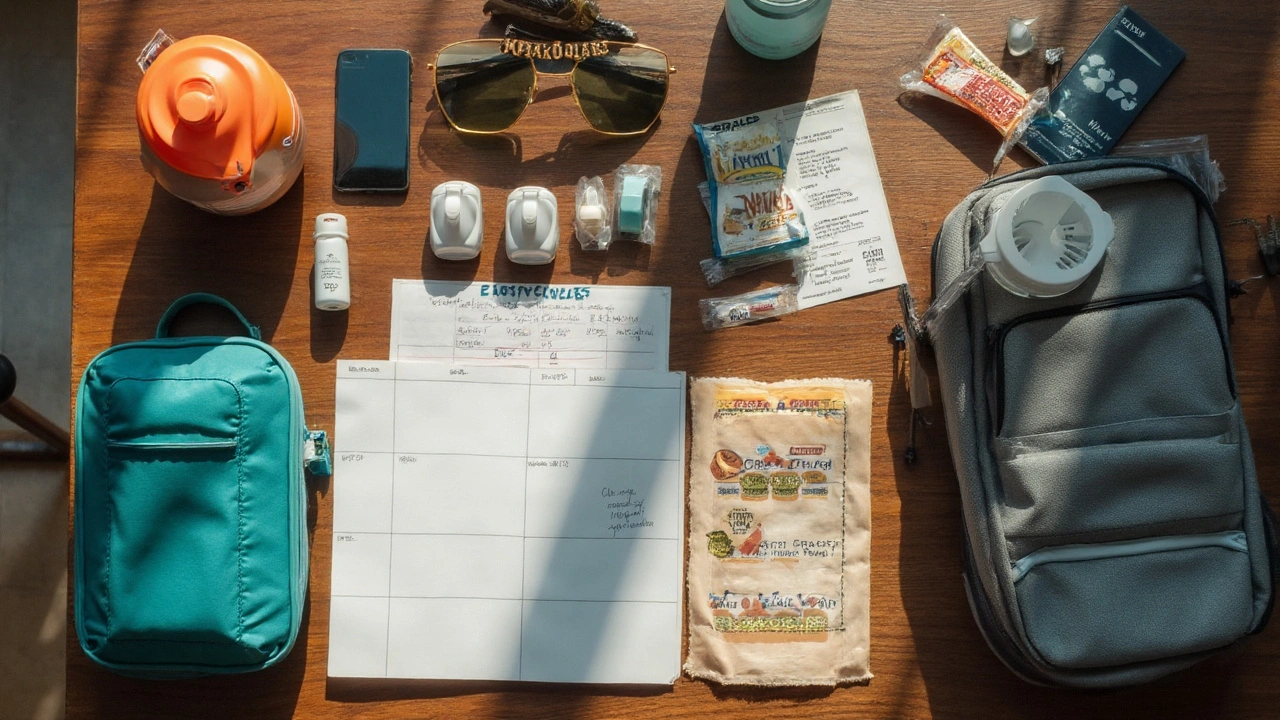Travel Health Planning: Your Quick Guide to Staying Safe on the Road
Planning a trip feels exciting until you remember the health checklist. Skipping vaccines or forgetting medication can ruin any adventure. That’s why a solid travel health plan should sit right next to your itinerary. Below are the must‑do steps that keep you feeling great from take‑off to homecoming.
1. Check Vaccines and Health Risks Early
Start by looking up the health risks for your destination. Resources like the CDC or local health ministries list required and recommended shots. For most tropical trips, you’ll need hepatitis A, typhoid, and maybe yellow fever. If you’re heading to a high‑altitude area, consider a medication for altitude sickness. Book your appointments at least four weeks before departure so you have time for the immune response.
2. Pack a Smart Travel Medical Kit
A well‑filled kit is the difference between a quick fix and a clinic visit abroad. Include pain relievers, antihistamines, anti‑diarrheal pills, rehydration salts, and any prescription meds you take daily. Don’t forget a small first‑aid set—band‑aids, antiseptic wipes, and tweezers. Keep everything in original packaging and label it with your name to avoid customs hassles.
When you travel with prescription drugs, bring a copy of the prescription and a doctor’s note. This helps you clear security checks and get a refill if needed. Store the meds in your carry‑on, not checked luggage, to avoid temperature extremes and loss.
3. Plan for Food and Water Safety
Food‑borne illness is the top complaint from travelers. Stick to bottled or filtered water, and avoid ice unless you know it’s made from safe water. Eat cooked foods that are served hot, and peel fruits yourself. Street food can be delicious, but choose stalls with high turnover and clean conditions.
Consider a probiotic before you leave; it can help your gut adjust to new bacteria. And if you’re prone to motion sickness, bring ginger tablets or over‑the‑counter remedies in your kit.
4. Manage Chronic Conditions on the Road
Living with diabetes, asthma, or heart disease adds extra steps. Carry a list of your medications, dosages, and emergency contacts. Pack enough medication for the entire trip plus a few extra days in case of delays. Research local pharmacies and hospitals near where you’ll stay, so you know where to go if something goes wrong.
5. Stay Informed and Flexible
Health advisories can change fast. Subscribe to alerts for your destination and keep the local emergency number handy. If you feel sick, don’t wait—see a local clinic or use tele‑medicine services if available. Early treatment often prevents a minor issue from turning into a trip‑ending problem.
By following these simple steps, you’ll minimize health surprises and maximize enjoyment. Travel health planning isn’t just a box to check; it’s the foundation of a smooth, unforgettable journey. Ready to pack? Your health checklist is waiting.
Hypophosphatemia Travel Tips: Safe Flying, Time‑Zone Dosing, and On‑the‑Go Management
- Benjamin Aghaki-Allen
- Health
- 0 comment
Traveling with hypophosphatemia? Practical tips for meds, time zones, flights, food, heat, illness, and emergencies-so you stay steady and enjoy the trip.
VIEW MORECategories
Popular posts
-
Compare Diclofenac SR with Other Pain Relief Options
Benjamin Aghaki-Allen -
Deertongue Supplement: Proven Health Benefits & How to Use It
Benjamin Aghaki-Allen -
Catechu: The Essential Supplement for Modern Health Enthusiasts
Benjamin Aghaki-Allen -
Metronidazole Neuropathy: Recognizing Numbness and Tingling Early to Prevent Permanent Damage
Benjamin Aghaki-Allen -
How to Buy Cheap Generic Gabapentin Online Safely
Benjamin Aghaki-Allen
Popular tags
- side effects
- online pharmacy
- dietary supplement
- alternatives
- dosage
- gut health
- weight management
- quality of life
- cheap generic Zoloft
- affordable sertraline
- blood pressure medication
- ED medication comparison
- Tadalafil
- comparison
- music therapy
- relapsing-remitting disease
- multiple sclerosis management
- anxiety and fatigue relief
- rhythmic auditory stimulation
- blond psyllium
